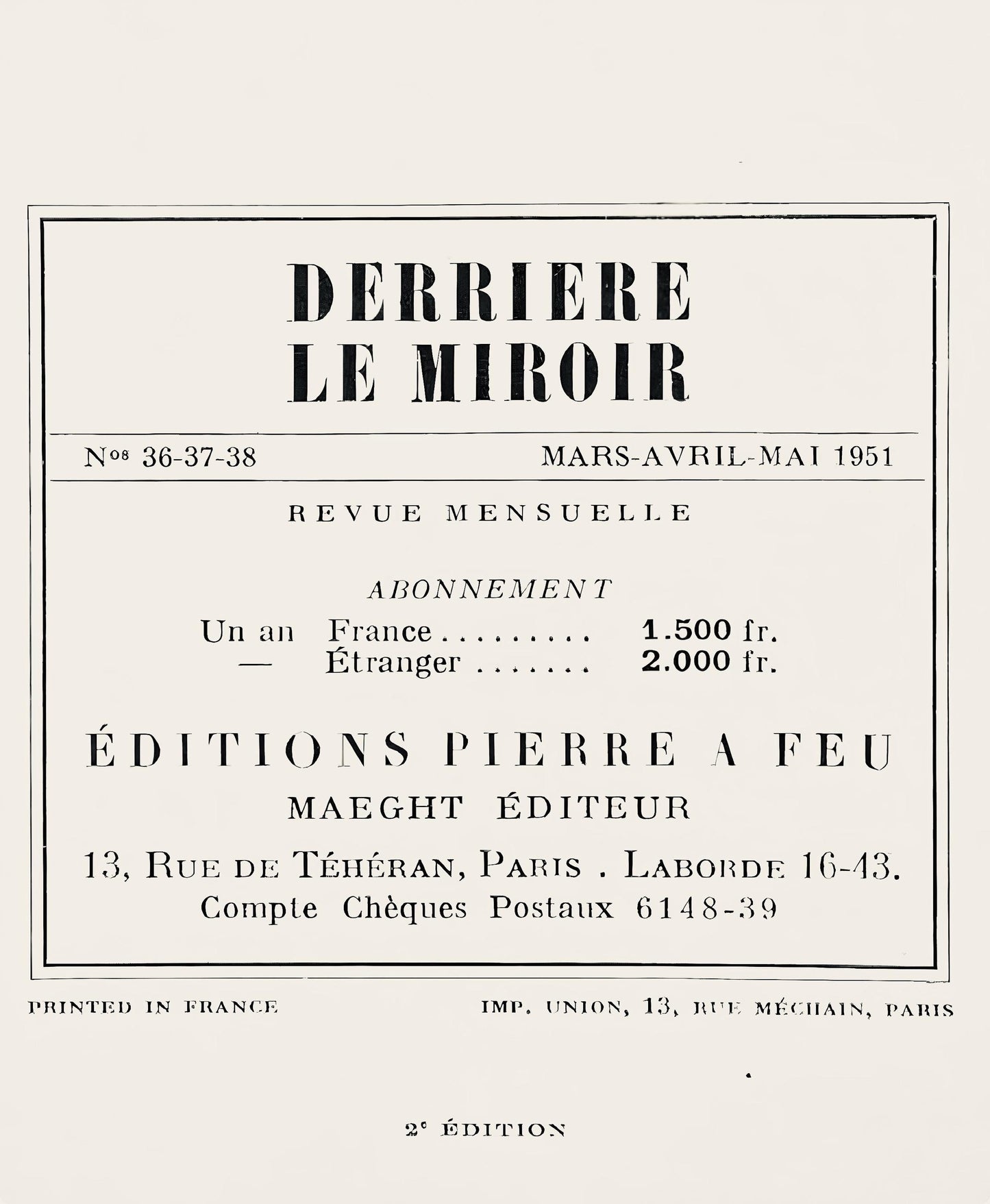Fernand Lger, Les Instruments De La Passion, Derrire Le Miroir, Lithograph
Fernand Lger, Les Instruments De La Passion, Derrire Le Miroir, Lithograph
Estimated Price: $775 - $950
Couldn't load pickup availability
Condition: Pre-Owned
Lithograph on vlin paper.
Paper size: 15 x 22 inches.
Excellent condition, with centerfold, as issued.
Inscription: Unsigned and unnumbered, as issued.
Notes: From Derrire le miroir, N 36-37-38.
Published by Aim Maeght, diteur, Paris; printed by ditions Pierre Feu, Galerie Maeght, 1951.
Excerpted from a Christies, New York lot essay, The life span of Derrire le Miroir was thirty-five years.
Publication began in 1946.
Aim Maeght, initiator of Derrire le Miroir, had already made few attempts to start publications illustrated with fine printed lithographs in colours in the years prior to the launch of Derrire le Miroir.
The name, Derrire le Miroir was suggested by Jacques Kober, manager of Galerie Maeght.
The gallery had opened in 1945; the first number of Derrire le Miroir was released a year later.
For this first issue Geer van Velde was invited to create lithographs to illustrate the publication.
The lithographs in the first issue was printed by Mourlot, Paris.
The first three issues of Derrire le Miroir were unsuccessful for Maeght as far as the edition sizethe initial print-runs were far too large.
From 30,000 for the first issue, the number was taken down to 10,000 for numbers two and three, until Derrire le Miroir number four was published in an edition of 1500.
Maeght instituted a policy whereby unsold issues were recycled and used for the fabrication of new paper for the coming editionsthis served to both conserve resources and also usually result in ultimate edition sizes far less than 1,500.
With number four, the permanent format for Derrire le Miroir was established.
Lithographs in colours were key; text was limited to comments on the featuring artist's exhibition taking place in the Galerie Maeght, and this catalogue format was defining to Derrire le Miroir.
Galerie Maeght took on the leading role in Paris and presented all main artists including Braque, Matisse, Chagall, Lger, Bonnard, Chillida and many more.
So too did Derrire le Miroir.
The idea of a magazine was meanwhile still on the mind of Aim Maeght.
He found an insert as a solution.
Two, and later four, pages of art review were inserted from 1952 onwards.
In 1968 this find had ripened to independency and the dream of Aim Maeght was now a tangible fact named l'Art vivant.
Derrire le Miroir was on it's own again.
Over 250 issues in a row.
At that point publisher Aim Maeght wished to make a mark with the publication of an hommage to all who once contributed to the magazine which came in the form of issue number 250, but was delayed by the death of Aim Maeght.
It was published after number 253 in 1982 and became a tribute to Aim and Margurite Maeght and 35 years of friendship with artists and poets. The era of Derrire le Miroir was closed with that final publication.
All items are carefully packed and shipped via insured courier services. Processing time: 1–3 business days.
Tracking details will be provided once shipped.
Read more of our
Shipping Policy.
All sales are final unless otherwise stated. Authenticity guaranteed. Please read full terms on our website before purchase.
Read more of our
Terms of Service.




























